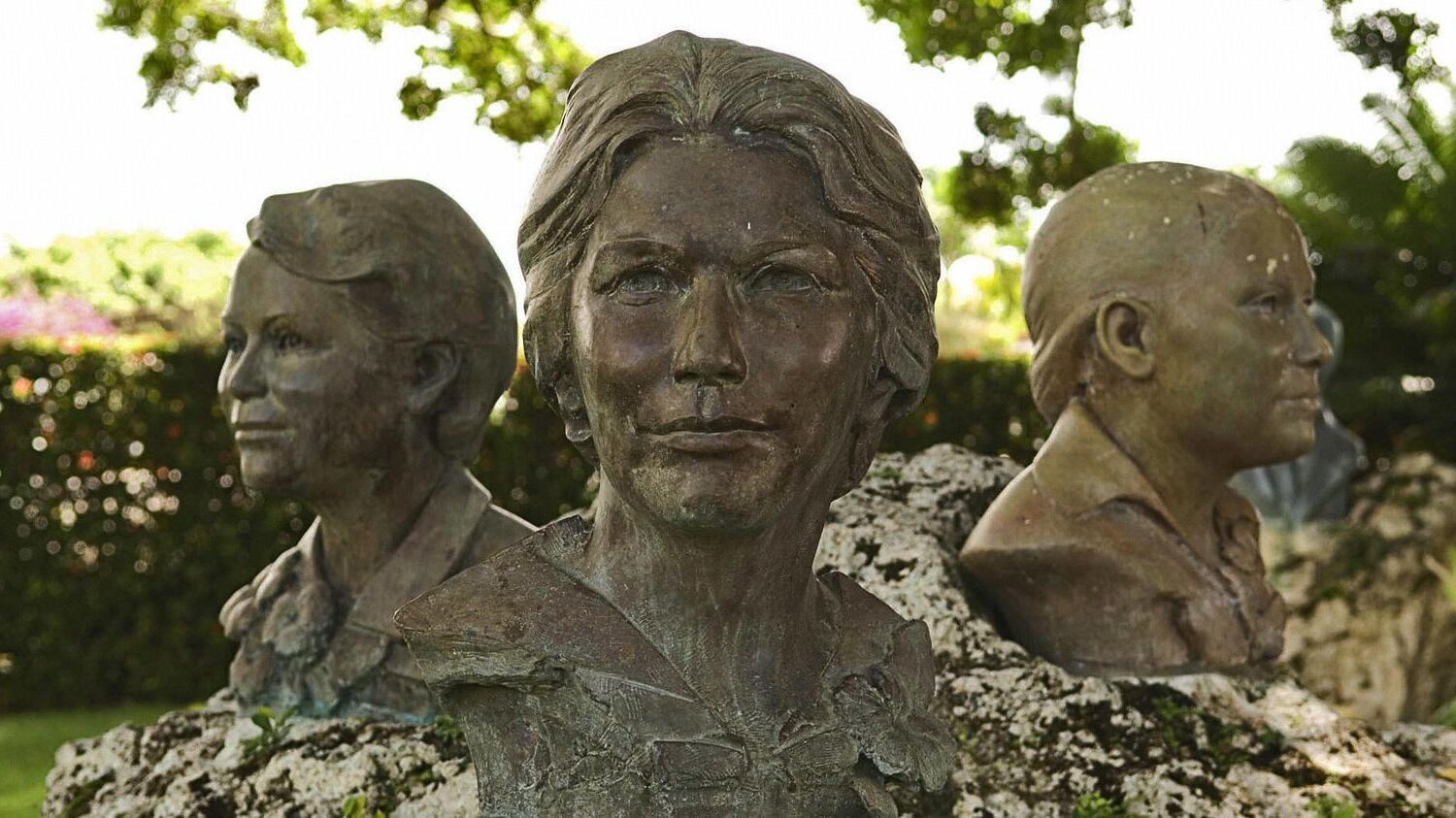
Who were the Mirabal Sisters? The Mirabal Sisters, also known as "Las Mariposas" (The Butterflies), were three Dominican women who played a crucial role in opposing the dictatorship of Rafael Trujillo. Patria, Minerva, and María Teresa Mirabal became symbols of resistance and courage. They were born in the Dominican Republic and grew up in a time when speaking out against the government was dangerous. Despite the risks, they joined the underground movement to overthrow Trujillo. Tragically, their activism led to their assassination on November 25, 1960. Their legacy lives on, inspiring many to fight for justice and equality.
Key Takeaways:
- The Mirabal Sisters, also known as "Las Mariposas," were brave Dominican women who fought against dictatorship, inspiring others to stand up for justice and freedom.
- Their legacy lives on through museums, currency, and international recognition, reminding us of the power of unity and the importance of standing up against oppression.
Who Were the Mirabal Sisters?
The Mirabal Sisters, also known as "Las Mariposas" (The Butterflies), were four Dominican women who opposed the dictatorship of Rafael Trujillo. Their bravery and tragic end have made them symbols of resistance and freedom.
-
Patria, Minerva, and María Teresa Mirabal were the three sisters who became martyrs.
Dedé Mirabal, the fourth sister, survived and dedicated her life to preserving their legacy. -
Minerva Mirabal was the first to become politically active.
She studied law and was outspoken against Trujillo's regime, inspiring her sisters to join the cause. -
Patria Mirabal was the eldest sister.
Initially hesitant, she joined the movement after witnessing a massacre by Trujillo's forces. -
María Teresa Mirabal was the youngest sister.
She followed Minerva's lead and became deeply involved in the underground resistance. -
The sisters were born in Ojo de Agua, a rural area in the Dominican Republic.
Their humble beginnings did not deter them from fighting for justice.
The Fight Against Trujillo
The Mirabal Sisters' resistance against Rafael Trujillo's dictatorship was marked by courage and sacrifice. Their actions inspired many to stand up against oppression.
-
Minerva Mirabal was denied a law degree by Trujillo.
Despite completing her studies, Trujillo blocked her from practicing law due to her opposition to his regime. -
The sisters formed the "14th of June Movement."
Named after a failed rebellion, this group aimed to overthrow Trujillo. -
They used code names for safety.
Minerva was "Mariposa 1," Patria "Mariposa 2," and María Teresa "Mariposa 3." -
They distributed pamphlets and organized meetings.
These activities were crucial in spreading anti-Trujillo sentiment. -
The sisters were imprisoned multiple times.
Their arrests were meant to intimidate them, but they remained undeterred.
The Tragic End
The Mirabal Sisters' fight for freedom came to a tragic end, but their legacy continues to inspire.
-
On November 25, 1960, the sisters were assassinated.
Trujillo's henchmen ambushed them on their way home from visiting their imprisoned husbands. -
Their deaths were staged to look like an accident.
The regime hoped to avoid backlash by making it appear as a car accident. -
Their bodies were found at the bottom of a cliff.
The brutal nature of their deaths shocked the nation. -
Dedé Mirabal survived because she was not with them.
She continued to fight for justice and kept their memory alive. -
Their assassination sparked outrage.
The sisters' deaths galvanized the opposition, leading to Trujillo's assassination in 1961.
Legacy and Recognition
The Mirabal Sisters' legacy lives on through various forms of recognition and commemoration.
-
November 25 is International Day for the Elimination of Violence Against Women.
This date was chosen in honor of the Mirabal Sisters. -
Their childhood home is now a museum.
The Mirabal Sisters Museum in Salcedo, Dominican Republic, preserves their story. -
The sisters are featured on Dominican currency.
Their faces appear on the 200 Dominican peso bill. -
Numerous books and films tell their story.
"In the Time of the Butterflies" by Julia Alvarez is a notable example. -
Schools and streets are named after them.
Their names are a constant reminder of their bravery.
Personal Lives
Despite their political activism, the Mirabal Sisters had rich personal lives filled with love and family.
-
Minerva married Manolo Tavárez Justo.
He was also a prominent figure in the resistance. -
Patria married Pedro González.
They had four children together. -
María Teresa married Leandro Guzmán.
They had one daughter, Jacqueline. -
Dedé married Jaime Fernández.
She had three sons and managed the family business after her sisters' deaths.
Cultural Impact
The Mirabal Sisters have left an indelible mark on Dominican culture and beyond.
-
They are national heroines in the Dominican Republic.
Their story is taught in schools and celebrated in national history. -
Their legacy extends to feminist movements worldwide.
They symbolize the fight against gender-based violence and oppression. -
Artists and musicians honor them.
Songs, paintings, and sculptures celebrate their courage. -
They are a symbol of resistance in Latin America.
Their story resonates with many who have faced similar struggles. -
Their lives are a testament to the power of unity.
The sisters' bond and shared purpose made them stronger.
Continuing Influence
The influence of the Mirabal Sisters continues to grow, inspiring new generations to fight for justice and equality.
-
Dedé Mirabal founded the Mirabal Sisters Foundation.
This organization works to promote social justice and human rights. -
Their story is part of the global human rights narrative.
The sisters are often cited in discussions about resistance and sacrifice. -
They inspire educational programs.
Schools and universities use their story to teach about dictatorship and resistance. -
Their legacy is celebrated annually.
Events and ceremonies on November 25 honor their memory. -
The Mirabal Sisters remind us of the cost of freedom.
Their sacrifice underscores the importance of standing up against tyranny.
The Mirabal Sisters' Legacy
The Mirabal Sisters left an indelible mark on history. Their bravery and sacrifice in the face of tyranny continue to inspire people worldwide. These women, known as Las Mariposas, stood up against the oppressive regime of Rafael Trujillo in the Dominican Republic. Their tragic deaths on November 25, 1960, sparked international outrage and eventually led to the establishment of the International Day for the Elimination of Violence Against Women.
Their story reminds us of the power of courage and the importance of standing up for justice. The Mirabal Sisters' legacy lives on through countless books, films, and educational programs. They serve as a powerful symbol of resistance and hope, proving that even in the darkest times, the human spirit can shine brightly. Their impact will be felt for generations to come.
Frequently Asked Questions
Was this page helpful?
Our commitment to delivering trustworthy and engaging content is at the heart of what we do. Each fact on our site is contributed by real users like you, bringing a wealth of diverse insights and information. To ensure the highest standards of accuracy and reliability, our dedicated editors meticulously review each submission. This process guarantees that the facts we share are not only fascinating but also credible. Trust in our commitment to quality and authenticity as you explore and learn with us.


